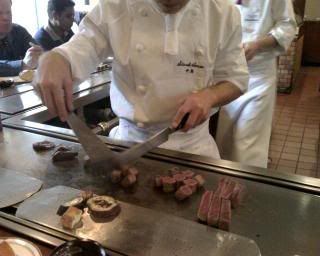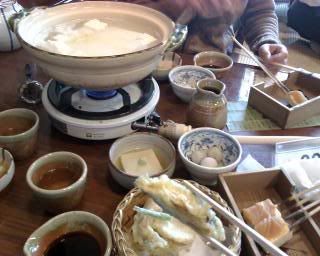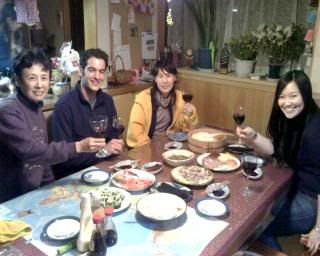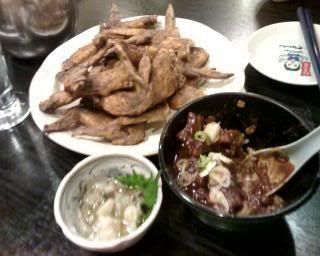I'm doing belated posts again. Working on a tight schedule in Japan had kept me busy and after arriving in Morocco, the inefficient IT at the local office thwarted my plans to blog.
When it comes to food, Japanese and Thai food take the cake. Singaporean and Malayan food only come up in second place. The reasons for my preference of Japanese food? The freshness of the ingredients-used and the simplicity of it's cooking. Like most Asians, I like soya-based (shouyu & miso) flavouring in foods. On top of it, the way Japanese foods are presented is so pleasing to the eye, so what's not to like? Lastly, the Japanese are specialists in cooking fish and they are probably even better than the Chinese. By the way, the Algerian and Moroccan ways of cooking fish leave a GREAT DEAL to be desired (Often a waste of good fish!!!)
Unlike my previous trips to Japan, which were almost exclusively in Tokyo, this time I had the opportunity to spend most of my time in Nagoya and also made a slight detour to Fukuoka and Kyoto. Of course, I didn't disappoint myself by sampling a lot of the local delicacies along the way.
When I'm in the middle east, I missed most ramen cooked in thick pork broth (tonkotsu). The one I had in the picture wasn't tonkotsu but miso based.
Japan beef (wagyu) has a marbled texture due to a well-balanced distribution of fats in the meat. I heard that wagyu are fed beer, good grains and they undergo regular massages for their meat to achieve such a texture. The most famous beef brands in Japan are Matsusaka, Kobe, Omi and perhaps others. Among the best Japanese beef, I've tried Matsusaka beef during my previous trips. On this trip, I again had good luck. The chef in the picture is preparing my Omi beef teppanyaki. Hopefully in the future, I can try Kobe beef.
After eating so much meat during my trip, it was a nice change to have something light and yet tasty. The picture shows a Yu Dofu course that I took in Kyoto. Kyoto cuisines (kyoryori) are known for their refined nature and I think tofu has an excellent and refined taste. Yu dofu literally means tofu cooked in a pot of hot water (yu). The entire course contained no meat but is made up of tofu and other vegetables cooked in different style. Very refreshing and healthy.
One of my Japanese director kindly allowed us a short stay at his home in Tajimi (Gifu prefecture). Although he wasn't on the trip, his wife and daugthers hosted us. I'm always eager to experience living in a Japanese traditional home but unfortunately, I never had the chance to participate in any homestay activities when I was still a student. The Tsuzuki family invited us to a simple but very special and delicious dinner of handmade sushi, salad, eggplant and miso soup (photo). Although the stay was short, it was very memorable. The hospitality and kindness of the Tsuzuki family best reflected the "guest-first" mentality of the Japanese Way.
This was my last meal in Japan before leaving for the airport. Mrs. Tsuzuki invited us to a meal at Yamachan's 幻の手羽先, which is known for making good tebasaki (chicken wings). Tebasaki is one of the specialty foods for Nagoya so it was sacrilegious if I didn't eat it before leaving Japan. I found tebasaki to be moderately nice but discoverd another of Nagoya's speciality "とて煮" (toteni)[bottom-right in picture] to be so much more delicious. I've now acquired a craving for this dish, which is made with miso boiled pork "spare parts" and served with rice.
I am definitely going to miss the food in Japan a lot!
Subscribe to:
Post Comments (Atom)








No comments:
Post a Comment